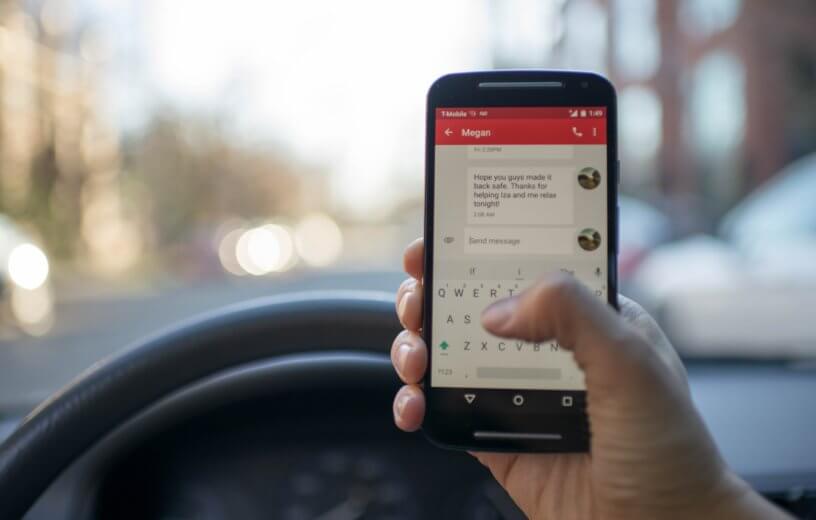COLUMBUS, Ohio — Lives are at risk every day across the country when millions of teens get behind the steering wheel. A frightening new study reveals nearly four in 10 teens admit to texting while driving — though the authors say those numbers may actually be underestimated.
The research, conducted by Nationwide Children’s Hospital in conjunction with the CDC and The Ohio State University, examined responses from the Youth Risk Behavior Survey administered in 35 states. The results were separated by state, with texting-while-driving percentages ranging from as low 26 percent (Maryland) to 64 percent (South Dakota).
Cellphone use while operating a motor vehicle has been shown repeatedly to be extremely dangerous, leading many states to ban the use of cellphones while driving altogether. Texting while driving has been estimated to increase the risk of crashing by two to nine times. Researchers say the behavior involves three types of driver distraction at once: visual (taking eyes off the road), manual (taking hands off the wheel), and cognitive (taking attention away from driving).
About two out of every five teenagers 14 years or older in the survey said they’ve texted while driving at least once in the month prior to the poll — even though 34 of the 35 states involved in the survey ban texting while driving for motorists under 21. White teens were shown to text and drive more than any other race or ethnicity. The study also showed that the number of teens who commit the dangerous act doubled between ages 15 and 16, and rose markedly for teens 17 and up.
“The increase in texting while driving at the age when teens can legally begin unsupervised driving was not surprising,” says the study’s lead author Dr. Motao Zhu, of the Center for Injury Research and Policy at Nationwide, in a statement. “Graduated driver licensing laws could have an impact on texting while driving behavior: the earlier teens start driving, the earlier they start texting while driving.”
Zhu backs that sentiment up by pointing to the survey results showing that the five states in which at least 50 percent of teenagers reported texting while driving had a learner’s permit age of 15 or younger. Unsurprisingly, teens who engage in other risky behaviors, such as not wearing seat belts and drinking while driving, were far more likely to text while driving as well.
Researchers say the figures could even be underreported because participants might have discounted behaviors such as texting while at a red light and other forms of distracted driving. Because the survey question asked about “texting and emailing while driving,” teens may have also not viewed reading or sending a message to be considered the same as writing one.
The authors provided the following suggestions for parents to consider as a way to help curb distracted driving:
Be a good role model. Teens are more likely to use their cellphones while driving if they see their parents doing it. If having your cellphone on and within reach while driving is tempting, put it on silent so you won’t hear notifications. Try putting it in the trunk or backseat compartment or locking it in the glove box so you can’t reach it while driving. If you cannot or do not want to put your cellphone away completely, ask a passenger to make and answer calls, read and reply to texts, or look at the calendar as you make plans.
Be patient. If you know your teen is driving, wait until he arrives before you text or call. Teens report that they are more likely to respond to a call or text while driving if it is from a parent, close friend, or boyfriend/girlfriend.
Set clear rules about prohibiting all cellphone use while driving. Make sure to communicate those rules clearly and enforce them.
Continue to monitor new drivers. Keep riding with your teen even after he gets his license. Compliment your teen’s safe driving behaviors and remind him of the rules when he makes poor decisions.
Take advantage of built-in features. Many phones have a driving mode you can turn on to disable texting, calling, or other functions while in motion. Consider having your teen use this mode or installing an app – some of which will send immediate notifications to parents – with a similar purpose.
The study was published on August 20, 2018 in the Journal of Adolescent Health.
